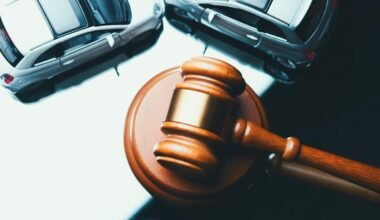Key Takeaway: Slip-and-fall accidents can cause catastrophic injuries and economic losses. Understanding how to identify dangers, establish liability, and calculate damages is critical while pursuing a work accident claim or premises liability litigation on public land, in a retail business, or at work. Early evidence-gathering and skilled legal representation are your best chances of complete recompense.
A Complete Guide to Slip-and-Fall Claims
Slip and fall accidents occur when someone loses balance or footing—often due to a wet floor, uneven surface, poor lighting, or debris—and sustains an injury. While many think of these as minor mishaps, they can involve broken bones, traumatic brain injuries, or worse. In the context of a work accident claim, the stakes are even higher, since workplace falls are a major source of worker’s compensation filings and can involve both employer liability and third-party premises responsibility.
A common cause of slip-and-fall accidents
- Wet or Slippery Surfaces Mopped floors, spills, and melting snow and ice.
- Uneven or Defective Walkways Cracked walkways, elevated floorboards, ripped carpet.
- Poor Lighting Corridors with burned-out bulbs and glare hide hazards.
- Obstructions and Debris Unattended tools, boxes in hallways, and electrical cords.
- Faulty Stairs and Handrails Steps, treads, and handrails are loose or broken.
Safety is the responsibility of property owners, including workplace employers. Slip-and-fall and work accident claims might result from ignoring dangers.
Understanding Premises Liability
Property owners and occupiers are liable for injuries caused by unsafe conditions under premises responsibility. Slip-and-fall claims require proof that:
- The owner should have known about the risk.
- It was not corrected or warned against.
- The negligence caused your injuries.
This applies to public locations (grocery stores, sidewalks) and private/business assets, including workplaces where workers’ compensation requirements may overlap.
Comparative Slip-and-Fall Negligence
Most states apply comparative negligence, reducing an award by the injured party’s percentage of fault. For example, if you were texting while walking and found 20% at fault, your $100,000 award would shrink to $80,000. Understanding your state’s threshold (pure vs. modified comparative negligence) is essential when negotiating a settlement or heading to trial.
Proving Fault and Gathering Evidence
A strong assertion requires extensive evidence:
- Photographs & Video of the hazard and surrounding area.
- Incident Reports filed with the property owner or employer.
- Witness Statements corroborating the unsafe condition.
- Maintenance Logs showing repair or inspection history.
- Expert Testimony (e.g., engineers, safety experts) to establish code violations.
Secure OSHA logs and internal safety reports for work accident claims.
Calculating Damages and Compensation
Slip-and-fall damages usually include:
- Medical Expenses: Emergency care, surgeries, rehabilitation.
- Lost Wages: Time off work and diminished earning capacity.
- Pain & Suffering: Physical discomfort and emotional distress.
- Loss of Consortium: Impact on relationships.
- Property Damage: Replacement of damaged personal items.
An skilled personal injury attorney can evaluate non-economic damages, which are often hardest to value.
Settling vs. Going to Trial
After insurer talks, most slip-and-fall lawsuits settle out of court. Settlement is faster and safer but may limit compensation. Trials provide full jury awards but add uncertainty and time. The lawyer will assess:
- Strength of evidence
- Insurer’s offers
- Long-term medical, economical, emotional demands
Frequently Asked Questions
Q: What is the statute of limitations for a slip and fall claim?
A: State statutes vary but usually last 1–3 years from injury. Missing this deadline frequently prevents lawsuits.
Q: Can I file both a workers’ compensation claim and a premises liability lawsuit?
A: Workers’ comp exclusivity may prevent you from suing your employer, but you can sue property owners or contractors for premises responsibility.
Q: How much does it cost to hire a personal injury lawyer?
A: Most slip and fall attorneys charge 33–40% of your settlement if you recover.
Q: What if the property owner disputes my version of events?
A: Fault disputes are widespread. Photos, witness testimony, and maintenance records can help you win negotiations or at trial.
Q: When should I report the slip and fall incident?
A: Report immediately. File an incident report with the property owner or manager and seek medical attention even for minor injuries—delayed treatment might hurt your claim.
Whether you’re navigating a work accident claim or a general slip and fall case, acting swiftly to document hazards, gather evidence, and consult a qualified attorney will maximize your chances of receiving fair compensation. If you or a loved one has been injured, don’t delay—your recovery and financial well-being depend on timely, informed action.



